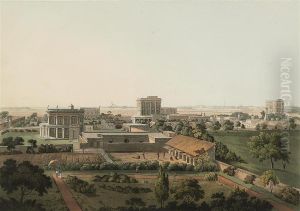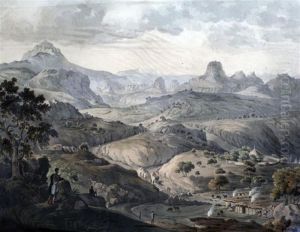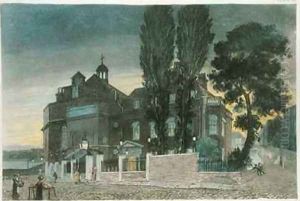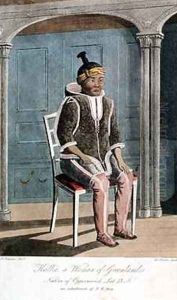Daniel Havell Paintings
Daniel Havell was a notable British engraver and printmaker born in 1785 in Reading, Berkshire, England. He was part of the Havell family, which included several members who were distinguished in the fields of printmaking and painting. Daniel was the brother of William Havell, a well-known landscape painter.
Daniel Havell’s career is particularly marked by his contribution to the field of aquatint engraving, a technique that allowed for the creation of prints that resembled watercolor paintings with rich, gradated tones. This technique was especially popular for illustrating books and reproducing works of art in the late 18th and early 19th centuries.
One of Daniel Havell's most significant achievements was his work on the book 'Oriental Scenery,' for which he collaborated with the famous landscape painter Thomas Daniell and his nephew, William Daniell. The Daniells had spent several years in India, and upon their return to England, they produced a series of views based on their sketches and paintings of the Indian subcontinent. Daniel Havell contributed to the engraving of these images, which were published in six volumes from 1795 to 1808 and played a crucial role in shaping European perceptions of the Indian landscape and architecture.
Despite the prominence of 'Oriental Scenery,' details of Daniel Havell's life and career are less well-documented than those of some of his contemporaries. What is known is that he worked primarily in London, where he was involved in the production of various other prints and publications as well.
Daniel Havell's work was characterized by a keen eye for detail and a commitment to high-quality craftsmanship, which can be seen in the delicate lines and intricate shading of his engravings. His contribution to the visual arts, particularly in the realm of printmaking, is recognized among connoisseurs and historians.
Daniel Havell died prematurely in 1826. His legacy, like that of many engravers of the period, is somewhat overshadowed by the painters with whom he collaborated, but his work remains an important part of the history of British printmaking.
















